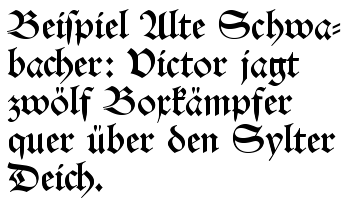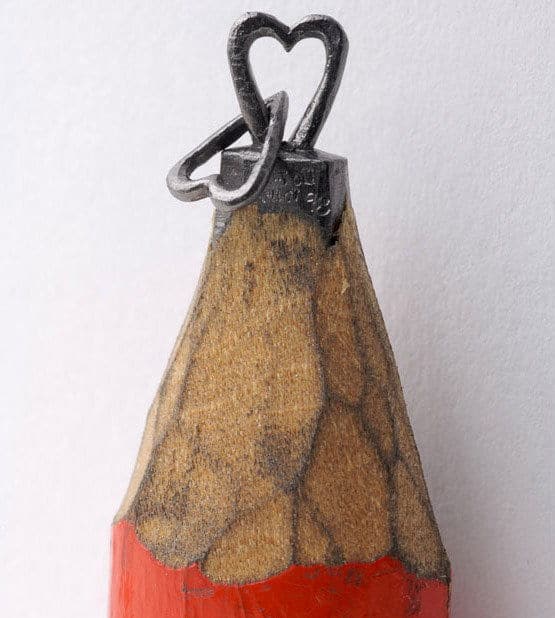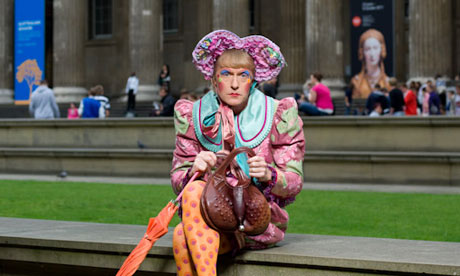Havering country park in the snow
A world without herbs
12 May 2013
Printmaking forest
5 April 2013
Creating font
So I looked up traditional German typefaces which would fit the feel of my originally German story and I came back with Schwabacher, it fits perfectly, kind of harsh but traditional, the font itself looks like a work of art so will hopefully make my images that much stronger for using it.
I used images like the one here as a structure for my own form of text...

I used images like the one here as a structure for my own form of text...

My book so far.... not quite page 1
The front cover...
...this is just a digital representation of how my front cover will look, the black part will be a type of stiff card so that I can make it a stencil/cut out cover to see the patterened paper/inner page behind it.
London zoo
Another research mission, this time to london zoo....
the aquarium was one of the nicest and warmest parts of the zoo, possibility for an underwater series?
but the rainforest enclosure was also lovely, especially after the mist's were sprayed into the tree tops...
the aquarium was one of the nicest and warmest parts of the zoo, possibility for an underwater series?
but the rainforest enclosure was also lovely, especially after the mist's were sprayed into the tree tops...
Animal Morphing
While developing my characters for my Grimm's fairytale book i found that using photographs of people i knew took something away from the story maybe that's because i know them to be different from the characters that Ive created but either way i knew they needed to be changed. What then inspired me was a TV series called 'Grimm' about detectives of the supernatural but what interested me was that some of the characters could be half human and half creature, for example there was clans of half wolf type people called blue bloods which would later tie into the story of little red riding hood and the three little pigs.
Anyway from my recent trip to London zoo i had lots of images that i could combine with my normal characters which definitely add to the eeriness of the book I'm creating, and from a psychological point of view my characters will be easier to fit into the readers imagination as they aren't already a person who may be judged on the way they look as well as being more memorable.

Above is the example of a blue blood from 'Grimm'
Below is my interpretation
Anyway from my recent trip to London zoo i had lots of images that i could combine with my normal characters which definitely add to the eeriness of the book I'm creating, and from a psychological point of view my characters will be easier to fit into the readers imagination as they aren't already a person who may be judged on the way they look as well as being more memorable.

Above is the example of a blue blood from 'Grimm'
Below is my interpretation
illustration and printmaking year 3
My final year as a student at uel. So time to get cracking with the big projects and decide what type of artist I really am!
Best make the most of it!
Best make the most of it!
18 April 2012
Alision Wilding
Got a
positive response from the city of Sunderland’s people as where it floated in
the river wear created an interesting introspective as there are many view
points to this work which give the public a different background on which the
work is displayed as it is underneath the Wearmouth bridge so can be seen from
the river with the city as a background or from the bridge looking out to sea.
The city
originally requested a monument to their past but instead got a glimpse of the
future with this ship-shape abstract work by Alison Wilding, a reminder that
the world progresses constantly and its identity with it, as this piece makes
the city feel like a work of art as its reflected back on its self.
The BBC had
an interview with Alison wilding on the 25th may 1988 where she goes
into detail about the struggle she has when creating her works and what is
important for her to portray to the public through the sculptures that she
creates.
Pure
sculpture, it’s the start of the art, as its uses intuitive materials which are
freeing to form allowing the artist to have an interaction with the materials
which then relate in the final piece which then the audience can also see the
interaction. Alison Wilding has an emotional response to her work with the
materials she uses and the shapes she creates, she believes that her life
nourishes her work, so her personal relationships affect the outcome of her
sculptures.
Although she
admits that she has trouble working, gets stuck like a fly in a spiders web,
and can stare at the work for hours before she sees how to move it forward but
this is the way she work she has to really look at a sculpture so she will know
how other people will view it as you can often be your hardest critic so only
you will know when a work is at completion.

Henry Moore
Henry
Moore’s Reclining Figure 1951
The
reclining figure was commissioned by the arts council for the festival of
Britain in 1951 but is now kept outside the Scottish National Gallery of Modern
Art. As it was, he made the figure, and then found the best position for it
that he could. He was simply concerned with making a sculpture in the round and
it was out in the open most of the time he was working on it for the festival.
The
sculpture is a bronze womanly figure which is over 2 meters long laying on a
plinth, its shapes give it an interaction feature with the surroundings as
there is visible gaps through the sculpture where point of the body touch the
base. The piece was supposed to be based upon the theme of family symbolising
‘discovery’ but instead he chose to create a large reclining figure in Bronze.
He began
making reclining figures in the late 1920’s and several small bronze figures
these conventional long lean forms which define this sculpture. The sculpture
more recently sold of £19.1 million, which was more than 3 times the estimated
price, which some people have commented that the buyer must have had more money
than sense but this sculpture is a piece of history and perhaps it was its
public interaction in the festival of Britain in 1951 which pushed its price so
high as the sculpture was certainly exhibited in a widely seen public arena.
An interview
with Henry Moore broadcasted 30th April 1951 gives an in depth
analysis of the artist but as the filming was over 60 years ago it’s like a
time capsule of information, not only of an artist but of the publics’
thought’s from that era.
The
interview gently explained the ethos of modern abstract sculpture. Through
innovative filming techniques and a specially commissioned soundtrack Henry
Moore’s works come to life. Sculpture is working of rock or wood and Henry
Moore is skilled in both, whether it’s modelling or carving.
Viewers see
the ‘reclining figure’ sculpture from start to finish, sketch to model to final
bronze sculpture, which gives great insight into the mind of Henry Moore. The
audience must understand his approach to his work before we can appreciate the
work itself. Although at the time of creation his world is unfamiliar to us
with his odd shapes and although he proved popular his abstract modernist works
moved British sculpture forward with unity from great originality and strength.
“Art is the
expression of the imagination and not the imitation of life” Henry Moore.

Jacob Epstein
Starting with a work from the early 20th century, looking at Jacob Epstein’s Memorial to W.H. Hudson in Hyde Park, 1925, which was a stone structure constructed for public viewing. W H Hudson was a novelist and naturalist best known for his exotic romance tales and when he dies in 1922 Jacob Epstein built a memorial (completion 1925) to honour Hudson’s memory. The memorial depicted one of Hudson’s characters, Rima, which was a half bird half human creature, so it seems fitting that the memorial stands in a bird sanctuary.
From an
interview with Jacob Epstein that was recorded by the BBC on 2nd
February 1958 he describes how he feels about his sculptures and sculpture in
general as well as how the art works should interact with the audience.
Sculpture involves the relation of the masses as without the support of the
public an exhibition would go unnoticed and the artists’ hard work would be
unaccredited. Although the thought and motivation behind a work of art should
be the upmost importance so the work doesn’t become an exercise. It’s ironic
that Epstein would say that “Mechanical forms shouldn’t be recreated in
sculpture” as he created the ‘rock-drill man’ sculpture which was radical for
its time but also a massive difference to his usual works of portraits which
involved soft curves and expressive figures. He had academic training but broke
away from the confines to express himself through his sculpture although never
created truly abstract forms referring back to organic materials in his works
which suggests that was something he may have been taught, as we often refer
back to what we have been taught as it’s what we are usually comfortable in.
Although as a supporter of modernism he aimed to break with classical and
traditional forms.
Ever since
Jacob Epstein transformed the possibilities for sculptors in Britain before the
First World War a remarkable momentum has been maintained, as sculptors have
become a league of their own with a confidence that allows them to experiment
with new materials and techniques and break away from tradition. Having in
previous centuries occupied a position subservient to painters, modern British
sculptors shook off their inferior status. Therefore men and women alike have
proved that outstanding British sculptors can gain high international
reputation. Along with Jacob Epstein, Henry Moore has also influenced younger
artists as Moore works a traceable line of descent for younger artists with a
meticulous tradition of object construction in Britain concerned with its
standing, it’s worth and value.

14 March 2012
Selfridges holds the museum of everything
The museum of everything (that nobody wants)
I have been dragged to the museum of everything 3 times now and every time I can't help want to leave almost immediately. I try to give every artist my time of day to appreciate what they have created but the carnival style of the exhibitions makes me feel like the shows inside should be exciting and intriguing while to me they give me the opposite feeling, as if there is too much substance on show in such a confined space.
The latest exhibition was in Selfridges in London but was still as claustrophobic and 'wacky' as the others, with its multicoloured streamers and makeshift interior walls giving the exhibition a shabby feeling which is then contrasted with the open, tidy stairway (part of Selfridges) that breaks the overall atmosphere for the exhibition. So it's not the works themselves that I have a problem with it's the way they are presented.
So, on a lighter note one of the artists I was mildly fond of was Ted Willcox and his embroidered pin up girls, I liked how he used a craft skill such as embroidery to portray these women on such a bright patterned background as although the background is so busy the women are still the main focus.

Exhibition #3 is now closed, but Exhibition #4 is on its way later this year.
8 March 2012
The Power Of Making
One particularly inspiring exhibition that I visited earlier this year was at the Victoria and Albert museum, the Power of Making had a large and specially crafted range of objects varying from robotics to handmade clothing and even everyday essentials such as saddles for riding.
Although there were many different types of crafts, there was one that stood out to me as a thing of beauty and immense skill by Dalton Ghetti, called 'Alphabet'. While a pencil is a conventional tool for artists to create work Ghetti has used them in a completely different manner where the pencils themselves are the works of art. Each of the pencils is carved into to create the incredibly fine lettering on top, which I feel has a quaint quality to them as well as being mindboggling in their technical skill used in their creation.
But what I find most amazing is the process he uses to create the miniature works, he uses needles, blades and special knives to form the tiny sculptures and he took around two and a half years to complete his alphabet. Although lettering isn’t the only thing he sculpts as he has done things such as suspended hearts, buttons and chairs all on from the lead in a pencil.

5 March 2012
Grayson Perry Talks at UEL
Grayson Perry has an interesting insight into the art world and life in general, as a person he is humorous bridging on sarcastic and he captures an audience with a quiet confidence that makes him personable and relatable, despite his unique lifestyle.
From his talk at my university I learnt a number of things some of which pop up in everyday life others I feel have helped opened my eyes a little more:
Firstly don’t take art to seriously, as 'art' is made in the eye of the beholder as Perry explained that for a while he struggled to be counted as an artist as he made his ceramic works critics said that he wasn’t an artist he was a craftsman, which in my opinion is like an artist but involves actual skill, while an 'artist' can create work that mainly lives though the process of thought.
Secondly mistakes can make the best works, he said that he could work from morning till dusk for a week and in his opinion his work still may not be good enough, we have to push ourselves to improve as you know your own capabilities better than anyone.
And finally you know you have made it when you have your own gift shop.
His latest exhibition was at the British Museum, "The Tomb of the Unknown Craftsman".
Subscribe to:
Posts (Atom)






